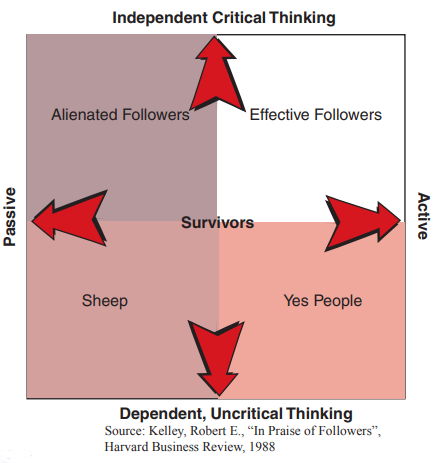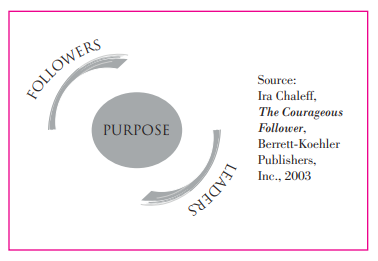There are four essential qualities of effective followers.
1. They manage themselves well: The key to being effective as a follower is paradoxically the ability to think for oneself. Followers also see themselves as equals to the leader they follow.
2. They are committed to a higher purpose: They work towards the purpose of the organization, and to certain principles and values outside of themselves. If they see a misalignment with personal values, they may withdraw their support either by changing jobs or by changing leaders.
3. They build their strengths: They have high standards of performance and are continually learning and updating their skills and abilities. They seek out extra work and responsibilities gladly in order to stretch themselves.
4. They take risks: They are credible, honest and have the courage to speak up. They give credit where due, but also admit mistakes. They are insightful, candid and they are willing to take risks. They can keep leaders and colleagues honest and informed.
In information-age organizations, hundreds of decentralized units process and rapidly act on varied input within the design and purpose of the organization. This requires an entirely different relationship between leaders and followers.


